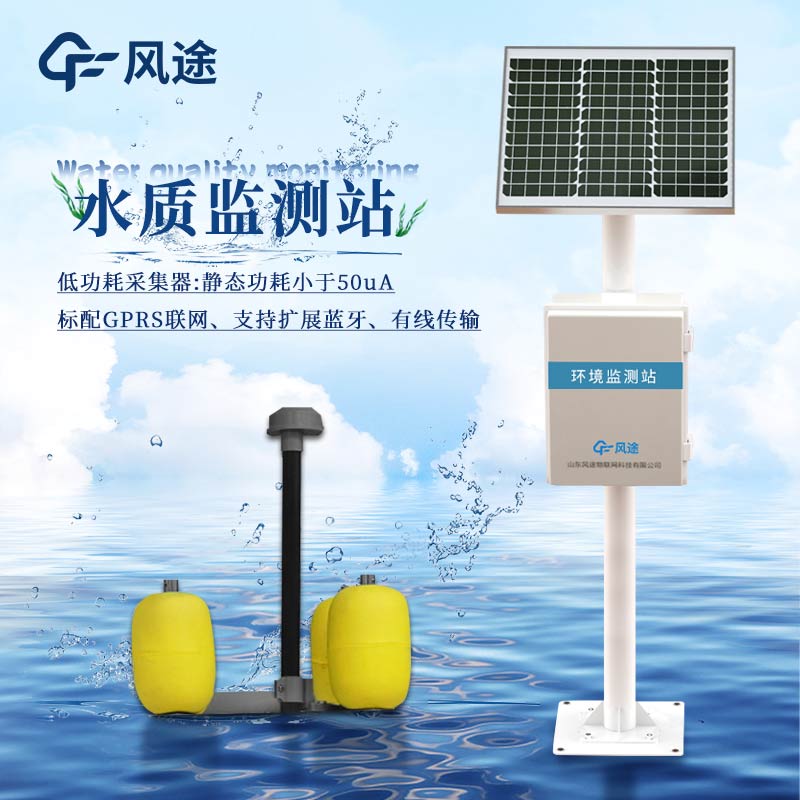Shandong Fengtu IOT Technology Co., Ltd
Sales Manager:Ms. Emily Wang
Cel,Whatsapp,Wechat:+86 15898932201
Email:info@fengtutec.com
Add:No. 155 Optoelectronic Industry Accelerator, Gaoxin District, Weifang, Shandong, China

Sales Manager:Ms. Emily Wang
Cel,Whatsapp,Wechat:+86 15898932201
Email:info@fengtutec.com
Add:No. 155 Optoelectronic Industry Accelerator, Gaoxin District, Weifang, Shandong, China
time:2025-03-11 09:24:37 source:Weather Station viewed:492 time
Water quality monitoring stations need to obtain real - time data of various water quality parameters, such as pH value, dissolved oxygen, chemical oxygen demand (COD), ammonia nitrogen, etc. Water quality sensors are devices specifically designed to measure these parameters. They can convert the physical and chemical properties in water into electrical signals or other transmissible signals, providing raw data for online water quality monitoring. Without water quality sensors, online water quality monitoring cannot obtain accurate and real - time water quality information, and thus cannot fulfill its functions.
Different types of water quality sensors correspond to the monitoring of different water quality parameters. The performance of water quality sensors directly determines the parameter range and measurement accuracy of online water quality monitoring. So, what are the online water quality monitoring sensors?
The editor has summarized as follows. Mainly there are dissolved oxygen sensors, COD sensors, turbidity sensors, sludge concentration sensors, cyanobacteria sensors, chlorophyll sensors, water transparency sensors, ammonia nitrogen sensors, nitrate nitrogen sensors, total nitrogen sensors, pH sensors, ORP sensors, water temperature sensors, suspended solids sensors, residual chlorine sensors, conductivity sensors, hardness sensors, and so on.
Water quality monitoring stations use the real - time data collected by these water quality sensors to achieve real - time monitoring of water quality. Once the water quality parameters exceed the set thresholds, the system can immediately issue warning signals to remind relevant personnel to take measures. For example, in the online water quality monitoring of drinking water sources, when the ammonia nitrogen sensor detects that the ammonia nitrogen content exceeds the standard, the system will alarm in a timely manner so that purification treatment and other measures can be taken promptly to ensure the safety of drinking water.
The collected data can also be transmitted to the remote monitoring center or relevant management departments through the network to achieve data sharing and remote access. This enables managers to understand the water quality conditions anytime and anywhere, providing decision - making support for water resource management, environmental supervision, etc.
In conclusion, the development of water quality sensor technology provides more possibilities and better technical support for water quality monitoring stations, enabling them to achieve more comprehensive and accurate water quality monitoring.

The traditional monitoring stations are sparsely distributed, making it difficult to comprehensively detect the traces of pollutants. In contrast, the Air Quality Micro-station introduces the concept of grid-based deployment, dividing the monitoring area into fine grids. Each grid is equipped with m...
meteorological station A monitoring system established to acquire meteorological data, used on land or at sea, equipped with instruments and equipment for measuring atmospheric conditions....
Portable surface flow meter is a portable device designed for field open channel flow velocity and flow measurement by departments such as hydrological monitoring, agricultural irrigation, municipal drainage, and environmental protection. It calculates flow rate by directly measuring the surface velocity of water and is suitable for rapid on-site measurement in various scenarios, including natural rivers, channels, and pipeline outlets....
Water is the most basic and important resource, and the quality of water sources is directly related to people's health. However, the development of industrial society has brought severe water pollution problems. Water quality monitoring from the source to the tap has become the core of ensuring...